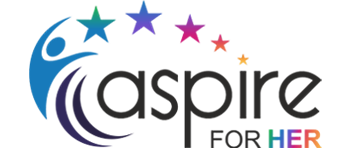Women In
Civil Services
by Donna Bhansali

The other day I got to know a friend of mine was hunting for a job. I know nothing is strange in doing that but I knew how badly she wanted to be an IPS. She was preparing for UPSC (Union Public Service Commission) exams for almost 3 years after graduation. It was unbelievable that she was going to quit her dreams and come back to doing a job. When I confronted her about why she was giving up on her dreams, she said it was getting difficult for her family to face the questions of society. When I further asked her about it, the questions that were getting to her family were, “Is she not doing anything after graduation?”, “When is she getting married (because she was now 25)?” After listening to it I felt helpless. It was difficult for me to understand and accept, to see her giving up on her dreams.
When I thought about this incident I realized that we have very few women in the field of civil services in India. Even after a decade of Independence, the percentage of women in civil services is abysmally low. It is crucial that structures of authority, decision making and implementation should provide access and equity to all segments of society including women. But ironically, the figures do not indicate the same. After researching I found out that according to the 2011 census there are 48.5% of females out of a total population of 1.2 billion. But women make up merely 25.5% of the workforce in India.
The Indian Civil Services was exclusively dominated by men before 1950 because according to the Journal of International Women’s Studies it was only after that, that women have been permitted to enter the public sector including Indian Civil Services. The All Indian Services (AIS) Rules, 1954 demanded the resignation of a female officer after marriage on the ground of efficiency notwithstanding the Constitutional parity. In 1972, gender parity was introduced in the most prestigious services.
“There is no chance for the welfare of the world unless the condition of women is improved. It is not possible for a bird to fly on only one wing.”
– Swami Vivekananda
Civil services are the backbone of administration, the means for development, and a buffer-system for smooth political transformation in any country. Civil services, one of the prestigious services in our country works as the backbone of the Indian administration. In other words, these services are like the central axis around the gamut of governance. All the key functions of administration like the maintenance of law and order, policy formulation and implementation, and delivery of public goods and services, are carried out by these services.
Anna George (Malhotra) was the first lady to join the Indian Administrative Services in 1951. It was not until 1972 that the first woman IPS Kiran Bedi was appointed to the Indian Police Service. The mainstream media has also tried hard to shed some light on this topic. The recent movies Jai Gangaajal and Mardaani 2 and the Netflix series Delhi Crime and Soni, have portrayed the prevalent patriarchy in the system.
According to the survey conducted by the Centre for the study of Developing Societies in partnership with Konrad Adenauer Stiftung, the major reason behind lesser participation of women in the workforce is that most women make career decisions around familial obligations, while many men make family decisions based on their career status. Gender discrimination in education level is also one of the existent reasons which is clearly indicated by a gap of 21.6% in male-female literacy according to the census India report. The impact of gender inequality on governance is debilitating as it is widespread.
In 2019, out of the total 829 candidates selected through the civil services exam, 197 were women which was merely 24%. The figures indicate dominance of males which is why it is also referred to as the “old boys club”. [3] Some women are well-qualified for academic positions but fail to be selected because customarily both politicians and bureaucrats are predisposed to patriarchal ideology — “a man is preferred because he is a man”.[2] These discriminatory appointments and promotion practices constitute barriers in institutions without equal opportunity policies. When an emergency situation arises in wee hours generally male officers are called.
Women are inadequately represented in the so-called “backbone of administration”, the Indian bureaucracy. There is only one femocrat (female bureaucrat) out of every five bureaucrats in India. Seeing that there is institutionalization of practices, patterns and beliefs, corollary, women are often assumed to be less available for leadership positions by those who hire.[2]
The women’s reservation provided under Article 243 of the Constitution which has rules and regulations for reservation of seats on different basis is a very bold and progressive step, but the philosophy behind it even today has not percolated down the system. Though everyone is aware of this seemingly easy problem, what worries me more is no stronger steps have been taken to make it right. What we as women need is a platform, where officers who are women can come forward and speak their hearts out. This will help other women to come forward as they will find it relatable.
I have realised that half of the problem will be solved if it is discussed and its gravity is realised by everyone. Solutions can be found once everyone realises that there “IS” a problem. It is a matter of behavioral change that is required, not a policy change. Policies can and will be formed, but behavioral change needs efforts from everyone and not just a particular group of people. It has to be ingrained in our minds that we have to be aware of these prejudices. It is everyone in society that needs to change. We as women have to put in efforts to create our space and make our presence felt.
If women are expected to give their 100% at work, they also deserve to be recognised at par with their counterparts. This is just a macro analysis of the problem. Even after all of the hurdles they face, many women have proven their mettle and are guiding light to the others who are at this juncture of confusion and self-doubt.
I hope this will get the attention it needs and in due course of time, we will just be officers. Nothing more but nothing less either.
“There is a reason why the most powerful storms were named after women”
References:
[1]https://feminisminindia.com/2020/03/12/struggles-battle-gender-roles-indian-administrative-services/[2]https://www.researchgate.net/publication/335726128_Women_in_Indian_Public_Administration_Prospects_and_Challenges[3]https://theprint.in/india/governance/how-the-indian-civil-services-continue-to-remain-a-boys-club/307370/Our Communities
We’d love to hear your thoughts too.
Be a part of the conversation and exchange of ideas by joining our community.
Submit a Comment
Our communities
Upcoming events
Can’t get enough? Explore our upcoming events and register to attend as many of them as you like.
Categories
Trending Posts
Recent posts
Buzzing right now
There’s a lot going on in these communities
at the moment. Join them now, as a member
or as a supporter.
SheDares
EntrepreNaari
NotAlone

